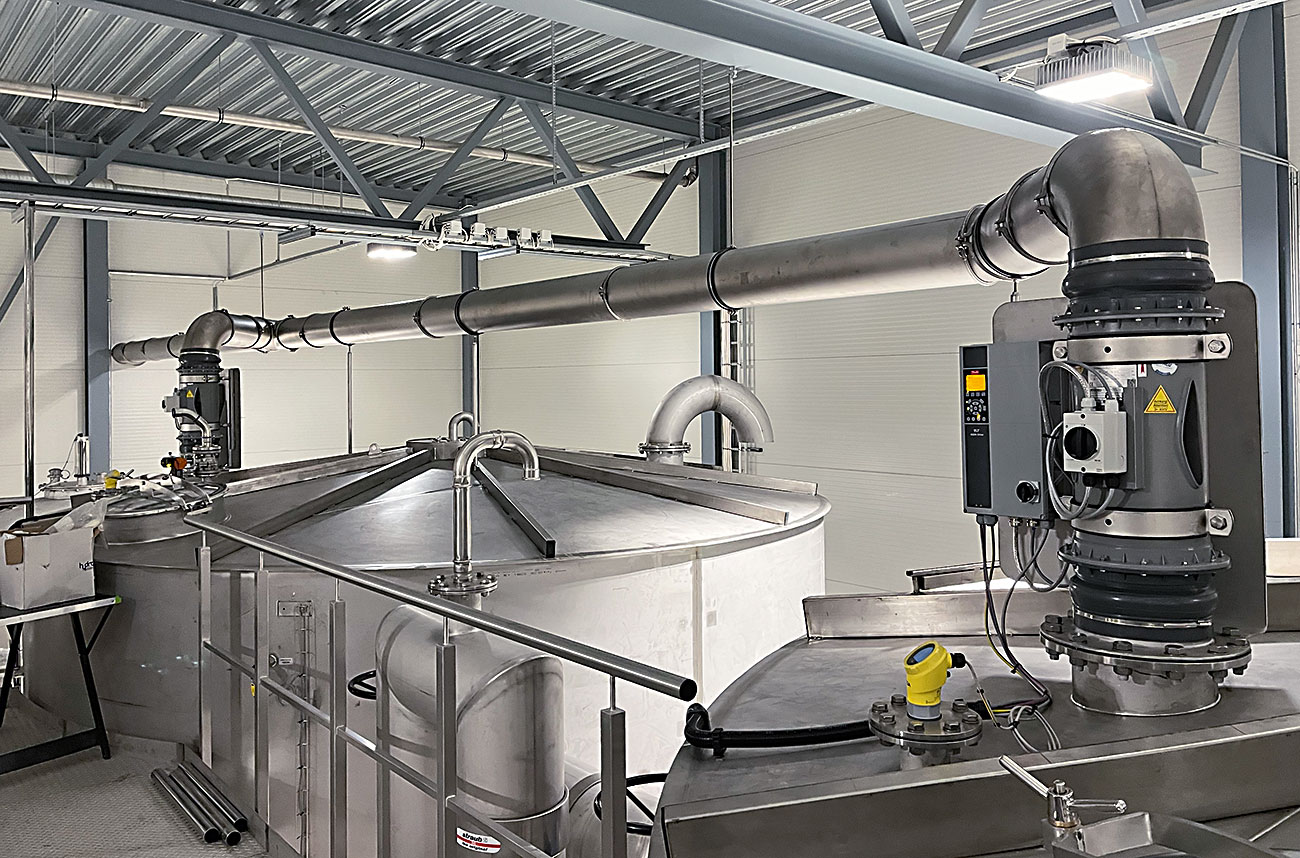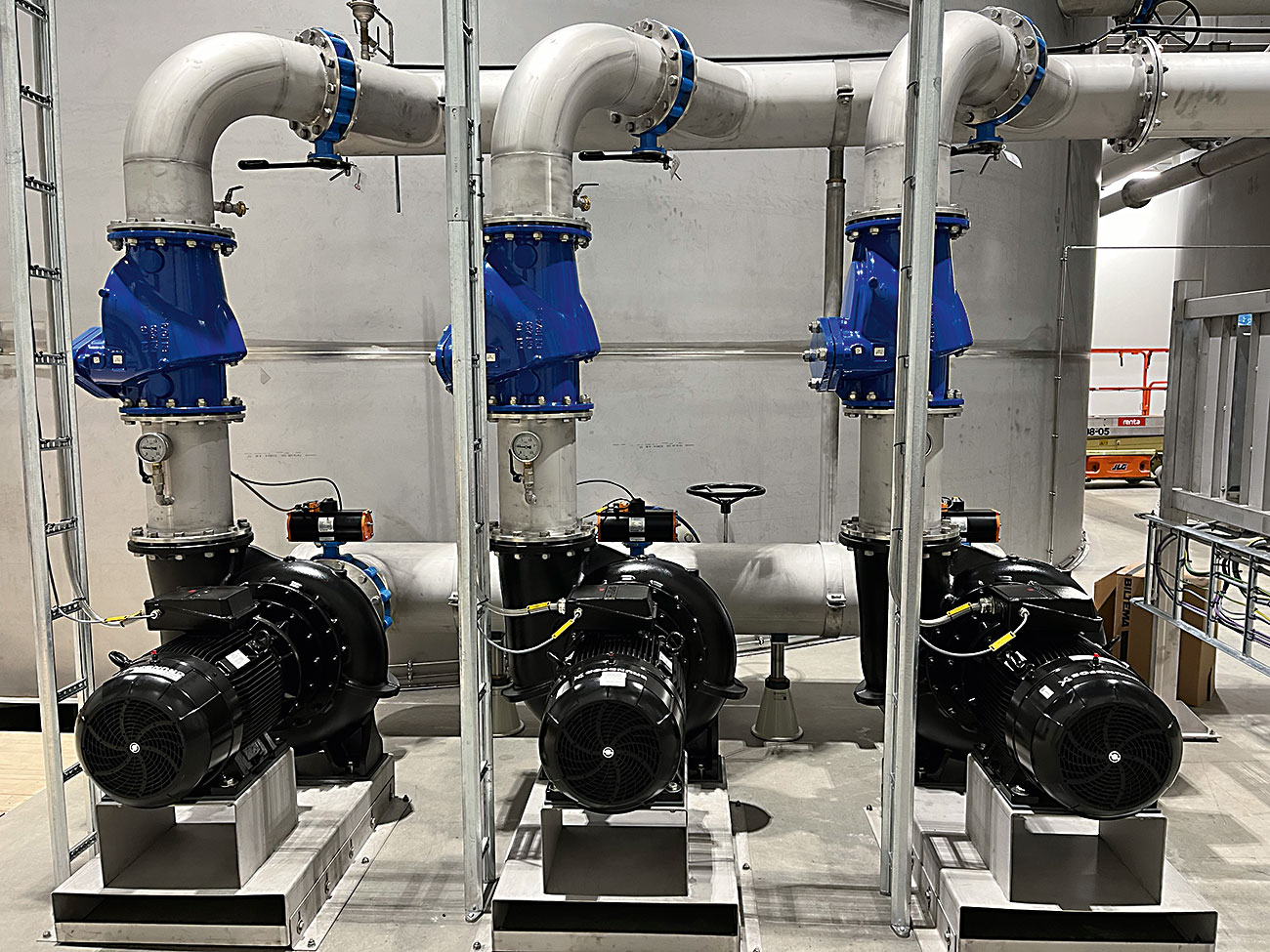Back in 2017, the health authorities requested an expansion of the waterworks to fulfil the required two independent barriers for safe disinfection. After an extensive evaluation process and the inspection of several different systems, the decision was made in favour of the ozone biofiltration process. The tender documents were published as a system tender in 2020 shortly before the pandemic. Hydro-Elektrik GmbH's bid, which proposed the realisation of the system with large filters, received the highest rating and was awarded the contract accordingly. This formed the basis for the extensive integration planning of the new plant into the existing system.
The raw water, which flows in from Lake Tisjøen at approximately 12 bar, is first used to generate electricity in a turbine house via a Pelton turbine and is then pumped to the waterworks under low pressure. After ozonisation, the ozonated water is fed into two reaction tanks in which ozone reacts with the organic substances in the water. After the reaction, carbon dioxide is dosed, and the acidic water is mineralized via two alkaline filters in the upstream flow, raising the pH value and facilitating flocculation processes. After the alkaline filter, the hardened water flows into the downstream biofilters and from there into the 1,000 m³ pure water tank. The outlet from the pure water tank leads directly into the network via the existing UV system. The water level in the clean water tank is the reference value for the treatment capacity, which was predefined in three stages at 200 m³/h, 320 m³/h and 550 m³/h.
All pipes, filters and water tanks used in the system are made of stainless resistant steel.



